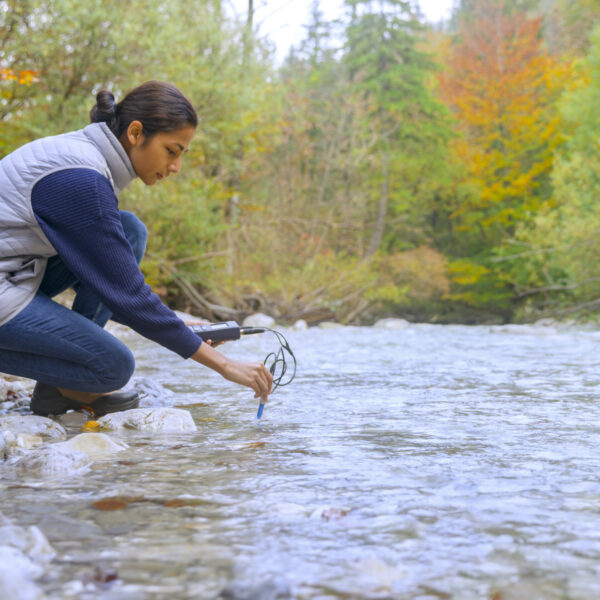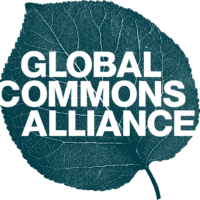
The revelation that there has been a 73% decline in species over the past 50 years set the stage for COP16, and during the conference the IUCN reported that one in three trees worldwide face extinction. With these timely reminders of the loss of nature and two years since the historic adoption of the Kunming-Montreal Global Biodiversity Framework (GBF) in Montreal, we were expecting more ambitious outcomes. The conference was suspended on Saturday 2 November after discussions went through the night and countries could not agree on the creation of a new global fund for nature.
Without a roadmap to deliver the governmental global north-to-south finance commitment of $20 billion a year from 2025 to implement the GBF, and with at least $2.6 trillion of subsidies still paid annually for activities harmful to nature, we are falling dangerously short of what’s needed to deliver a nature-positive future. Read the full statement from Marco Lambertini.
The COP, hosted by Colombia, did see some positive action for nature. Leaders agreed to a new permanent mandate for Indigenous Peoples which enables them to have their say directly on future biodiversity COPs. After intense negotiations, nations reached a consensus on a new benefit-sharing mechanism for genetic resources from plants and animals. There was also significant support and interest from the business and finance sectors who are recognizing their impacts and dependencies on nature, and their role in contributing to the solution.
The Nature Positive Initiative hosted several popular events during COP16 including an opening reception with all the partners of the Nature Positive Pavilion, ‘Explaining Nature Positive’, with high level participation from Astrid Schomaker, Executive Secretary of the UN Convention on Biological Diversity, and two days full of events about the newly aligned State of Nature Metrics.
Collaboration key to a universal set of State of Nature Metrics
We’re way off track to delivering a net-zero emissions, nature-positive and equitable world by 2030, but the positive engagement of those attending the Nature Positive Pavilion during COP16 gave some hope that we may still reach our goals. To drive the shift required to halt and reverse nature loss, we need a single set of nature positive metrics – a common approach to measure nature’s decline or recovery.
The two full-days of events dedicated to measuring nature’s recovery at COP16 saw overflowing audiences, signalling the swell of interest in measuring nature. Inspiring speakers from different industries represented standard setting, financial institutions, businesses, NGOs and assurance providers. Sessions included some deep dives into how state of nature metrics can be used by companies across complex supply chains, and by investors and lenders across portfolios, sparking discussion and shared thought leadership in how to facilitate the transition to a nature-positive world.
Collaboration and cross-sector participation are critical to the success of a universal set of State of Nature Metrics. That’s why we’ve launched a consultation on a set of practical and globally applicable State of Nature Metrics – deadline for participation is now extended until 13 November. The more voices that engage in the consultation, the wider the global consensus we can foster.
I’ve always been very impressed in the nature space by how well, from the very beginning, all of the organizations that we’re part of have worked together to make sure that we’re driving consensus and minimizing confusion in the complexity. —Dianne Holdorf, Executive Vice President, WBCSD
The first nature metrics day kicked off with a series of technical workshops where experts from across the globe gathered to give input on terrestrial State of Nature Metrics and further develop metrics for freshwater and marine realms. Representatives of the Science-Based Targets Network and the Taskforce on Nature-related Financial Disclosures discussed embedding the metrics in their existing standards and companies shared their experiences of implementing metrics in practice during the afternoon’s packed-out plenary sessions.
The fact that the Nature Positive Initiative has come up and decided to really do the difficult and hard work to consolidate nature metrics gives us a really great mark towards developing the Ecosystems Atlas to make it really fit for progress. —Yana Gevorgyan, Secretariat Director, Group on Earth Observations
On Nature metrics day two, we dived deeper into the practicalities of using State of Nature Metrics. Workshops were held to help co-design a piloting programme for the metrics. The plenary sessions tackled the challenges of applying the metrics across complex supply chains and investment portfolios. Highlights from the metrics days included perspectives from multilateral development banks on how metrics might be used for debt for nature swaps; practical insights on how existing internal data and tools can be used by companies to calculate metrics; and a resounding call for transparency and action.
All the plenary sessions are available to watch on our YouTube channel. Watch metrics day one and metrics day two.
In the way that CO2e has universalized how we measure carbon emissions, [we want] the State of Nature Metrics to be the universal metrics that will we will see across various voluntary and mandatory standards. — Alexandra Banks, Partner, Climate Change and Sustainability Services, Ernst & Young
What’s next on the road to Nature Positive?
Action to halt and reverse nature loss is intrinsically connected to also tackling the climate crisis and achieving the goals of the Paris Agreement. A recent UN report suggests we’re on course for a catastrophic 3.1 degrees warming by 2100 if governments do not take greater action. COP16 in Colombia may have closed but we have much work to do to halt and reverse nature loss. Next year the UNFCCC’s COP30 in Brazil will be an important moment for bringing the nature and climate agendas together. Ahead of then, the Nature Positive Initiative will continue to beat the drum for joint action on the climate and nature crises.
Connect with us via LinkedIn, X or join the Nature Positive Forum to stay up to date with the latest developments.





























